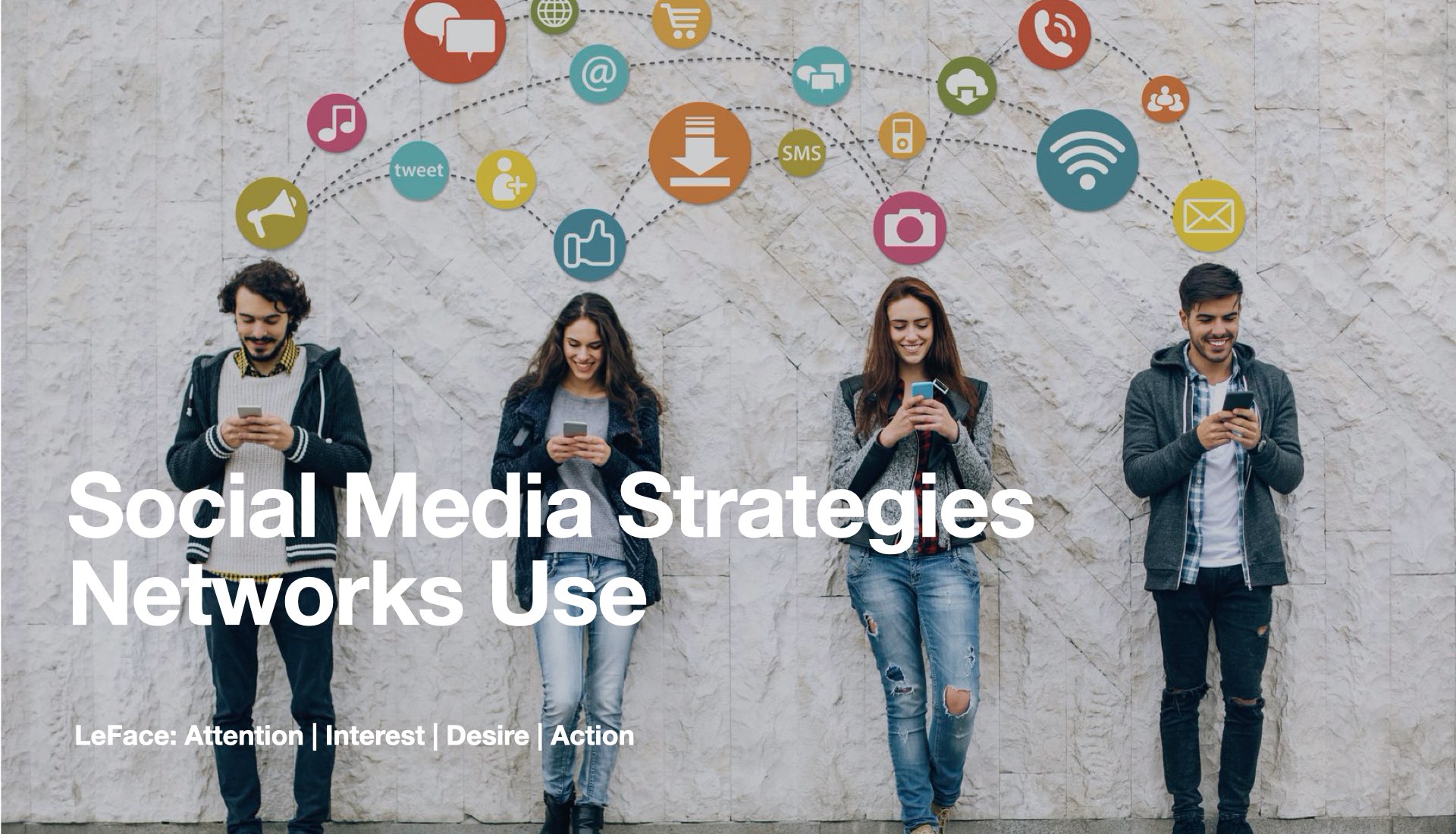
Creating a Brand Identity: Questions to Consider
Defining a brand identity isn’t a “fluffy” exercise with little measurable returns.
A solid brand identity can be the critical groundwork for developing customer loyalty and retention, which can be a huge competitive advantage.
Research by McKinsey confirms that we’re operating in an era of “digital Darwinism,” or intense disruption. Well-defined brands that adopt the right marketing tactics are most likely to survive and win.
How do you know if your brand can evolve? Consider these twenty questions…
Brand Identity Questions
Nailing an impactful brand identity is a critical part of Growth Marketing. Without a well-crafted and maintained brand identity, your marketing will always feel flat and one-dimensional.
A brand identity doesn’t live in a vacuum.
Think about it: you feel more connected with people you identify with. It’s the same with brands.
If you feel like a brand “gets” you, you’re much more likely to buy their products and become brand ambassadors. And no brand wins long-term without their customers becoming brand ambassadors.
Growth is a 6-part engine, and there are six levers that must all operate at peak efficiency for a brand to outgrow their competitors. The last lever is Referrals. And that single lever is should guide everything you do to grow your brand.
That’s why brand identity is so important.
It’s not just a logo and a color scheme. It’s what your customers think about when they think about you.
Your brand identity needs to be something they identify with. Otherwise, you’re just another name in the phone book, so to speak.
If you want to scale growth, you need to master the creation of a brand identity that begins before a customer knows you exist.
What is a Brand Identity, and Why Do I Need One?
Your brand identity is how your audience perceives you.
Snap Marketing puts it in even simpler terms, stating:
“a brand identity is the face of your business.”
Without a comprehensive, well-defined brand identity, your audience might not understand who you are. And, if they don’t understand who you are, they are never going to promote you.
It’s important to note that brand identity is not the same as branding. It’s the byproduct of effective branding.
Brand identity is also not the same as visual brand identity, even though marketers sometimes confuse the two.
Brand identity includes:
- Visual Brand Identity
- Brand Voice
- Brand Values
- Brand Personality
- Brand Message
Together, these five components create the look, feel, and tone of your company to the outside world. But it’s the 5th one that is the most critical.
If your message does not inspire and motivate your target market to want to buy from you, you’re missing the boat. And, when any competitor – whether or not they have a better product or service – figures out that message, they will mop the floor with you.
Brand Identity: 20 Questions to Ask
1. Who is Your Ideal Customer?
If your brand hasn’t developed buyer persona profiles or robust profiles of your ideal customers, this is the first place to start. Your buyer personas should shape almost every aspect of your brand identity.
Determine what your buyer personas value from a brand. Are they looking for cost savings or the highest quality? Do they want deep relationships with their vendors or convenience? By understanding your ideal buyer’s pain points and priorities, you can formulate a relevant identity.
For more information, we recommend Buyer Personas; What are They and Best Practices.
2. What Pain Points Do You Solve?
Your customers don’t start looking for your company because their lives are perfect. Chances are, you offer a product or service that will solve a problem. Maybe you offer personal finance software, and they’re tired of over-drafting their bank account. Perhaps you do compliance training, and they’re worried about regulatory requirement related fines. Your customers need you because of an existing pain point, or problem.
Your brand identity should instantly communicate how you solve these problems. Do you offer peace of mind? Workplace efficiency? The most convenient office supply delivery around? Regardless of how your brand connects with your customers, your ability to solve problems should be at the core of your brand identity.
3. What Kind of Personality Do You Have?
Brand personality is defined as a “human set of characteristics” that are connected to a brand. Brands with a strong, well-defined personality instantly win some like-ability points because customers are able to relate to them on a personal level.
Human personalities are rarely single-faceted. Brand personalities shouldn’t be, either. When you are in the beginning stages of defining your personality, it may be helpful to think in terms of archetypes. Some household brands and associated personality archetypes could include:
- Apple: Rebel
- Taco Bell: Jester
- REI: Outdoors-lover
- Target: Bold
- Subway: Optimist
- Whole Foods: Peace-lover
4. What is Your Competition?
Competitive analysis can be a helpful first step towards developing any marketing strategy. Brand identity is no exception. The branding lessons you can glean from your competitors can vary significantly according to your industry, and the level of competition you’re facing.
Related: Make Customer Acquisition Your #1 Competitive Advantage
Your competitors could be textbook examples of poorly-defined brand identity. They may have little-to-no voice consistency across digital mediums, and a logo that’s unoriginal. Perhaps they have an excellent brand identity that’s memorable, unique, and incredibly easy to like. Regardless of where your competitors stand, use their statuses as a starting place for creating a brand identity that’s objectively better.
5. How Do You Make Your Clients Feel?
When your most satisfied new customers communicate with your sales or account management team, what do they have to say? Listening to the interactions of new, satisfied customers can reveal a wealth of information about how you make your customers feel. Do they express:
- Relief?
- Inspiration?
- New-found energy?
The most frequent positive emotion your customers associate with your company is critical information for building a brand identity. Use this emotion to select visual identity aspects, including the optimal colors and fonts.
6. How are You Different?
What does your brand offer that your competitors can’t? Perhaps more importantly, how can you communicate this in your brand identity?
Whole Foods is one of the most visible and well-known organic grocery chains. Their difference is communicated clearly in the brand’s logo, which is green and includes a leaf.
It is important to note that simply being different isn’t enough. As branding blogger Tito Phillips highlights, you need to actively “make a difference.” This means actively carving out a niche, and continually playing to your strengths. Anyone who’s shopped at Whole Foods knows the grocery chain isn’t trying to compete on price. In order for Whole foods to maintain their “niche” of fresh, local, and specialty foods items, they can’t compete on price — and considering their brand identity, that’s perfectly fine.
7. Why Do Your Clients Trust You?
Conducting customer interviews or talking to your sales team can be an important tool for learning why your customers ultimately pick your company. The factor that leads to prospect trust and customer conversions can provide important clues to your brand identity. Your company’s unique trust factor could be:
- Transparency
- Expertise
- Flexibility
Use this “trust factor” as an important tool for defining why your brand is different, and building an appealing brand identity.
8. What’s Your Story?
Brand stories are an important component of branding. This includes both your literal history — such as how and why you were founded — and the story of the role you play in your customer’s life.
Your brand’s story should ultimately make your customer a hero. Perhaps you’re able to make them more effective at their jobs, so they receive tons of compliments from their boss. Maybe your mortgage products help them purchase their first home and start a family. This story can be an important basis for your brand identity and marketing content.
Related: Make Customer Acquisition Your #1 Competitive Advantage
9. What are 5 Words that Describe You?
An important exercise towards defining your brand’s identity can be developing a list of five adjectives that describe your brand’s personality, look, and voice. If Chik-Fil-A were to create a list, their five words might be:
- Quality
- Consistency
- Values
- Customer Service
- Commitment
What drove your CEO to start your company in the first place? How is your company different? By examining the values that run through your company, you can begin to develop a list of descriptive words.
10. What’s Wrong with Your Existing Brand Identity?
Whether or not your organization has put effort into defining a brand identity in the past, you have some identity if you have an online presence. It may not be cohesive or well-defined, but you have an identity in some form.
If your company is considering a rebranding or brand definition project, it may be important to consider why you’re initiating this effort. Is your existing brand poorly-defined to the point that it’s almost non-existent? It it a poor fit with who you really are? Have you introduced a new leader or ownership team that’s drastically changed your culture?
Understanding the reason you need to define your brand can reveal some important room for improvement. Use this knowledge to inspire the right kind of change.
11. What Brands Do You Admire?
You don’t need to look towards brands with similar products, services or customers. Developing a list of brands you admire can offer various types of lessons that can be helpful. Perhaps you admire Boxed Water for their values-forward branding and minimalist aesthetic. Maybe you’re a huge fan of Zappos for their intense focus on company culture and customer service. These concepts can be translated to companies in a different sector.
12. How Can You Simplify Your Brand Identity?
Minimalism isn’t the right approach for everyone, but few companies can benefit from a “cluttered” brand identity. The minimalist aesthetic and design movement is closely associated with concepts of modernism, rebellion, and edginess. It’s the concept of stripping down a design or object to the bare elements necessary for function. While a truly minimalist brand identity may be appropriate for a creative agency or architecture firm, it could feel out of place for a corporate insurance firm or accountancy group.
It’s possible to communicate elements of traditionalism, reliability, and values with a brand identity that’s pared-down, but not minimalist. Ride-sharing company Uber is a great example of a company who uses simple, sans serif fonts, bold colors, and a basic logo. However, in Uber’s case, they avoid appearing “too” minimalist. Simplicity is always better than confusion, but it’s important to ensure you’re still communicating the right message.
13. How Will You Test Brand Perception?
Once you’ve developed a brand identity, it could be important to “test drive” it in front of a group of your existing customers or qualified prospects. This audience may be able to provide important insights that your marketing team missed. Forbes contributor Ari Jacobyrecommends:
- Capturing your customer’s honest perception
- Shortening your information cycle, or how apparent critical info is
- Rethinking research to include A/B testing
If performing brand perception research isn’t plausible for your company due to timelines or budget constraints, I encourage you to perform research on how colors, fonts, and other aspects of brand identity are perceived by the public. Existing marketing and psychology research can provide brilliant insight into your brand’s future perception.
14. What is Your Audience’s “Language”?
What are the words and terminology your customers use to describe your industry, products, and services? There’s a good chance they don’t head to Google to search for “enterprise productivity solutions.” Chances are, they’re looking for “startup apps,” or “time-tracking apps.” Keyword research in HubSpot or another tool can be a critical step towards defining your language.
15. How Does Your Logo Communicate Your Brand?
Your company’s logo is one of the most important aspects of your visual brand identity. Ultimately, you don’t “own” your colors and font. Your logo will be one of the few original aspects of your visual identity, and an effective logo can create a lasting impression. An effective logo designis:
- Original: contain some visual elements, such as color combination or design elements, that no other company has.
- Timeless: avoid incorporating trendy design concepts, to ensure your logo will “age well” over time.
- Adaptable: the logo should scale well from thumbnail to a much larger scale. It should also translate well to both print and digital formats.
- Memorable: While “memorable” can be a difficult concept to test, your logo should leave a lasting impression.
- Relevance: Your logo should be clearly connected to your industry or products and services.
16. What is Your Font?
Typography communicates a lot more than “just” letters. It can impart feelings of energy, fun, humor, traditionalism and more. Much like colors, humans associated emotions and adjectives with fonts. Common font associations include:
- Serif Fonts, including Times New Roman, Georgia, and Garamond:Authoritative, Traditional, Respectable
- Sans Serif Fonts, including Helvetica, Arial, and Verdana: Modern, Clean, Stable
- Slab Serif Fonts, including Rockwell, Courier, and Museo: Bold, Strong, Modern
- Script Fonts, including Lobster, Lucida, and Brush Script: Elegant, Friendly, Creative
- Modern Fonts, including Politica, Eurostyle, and Matchbook:Fashionable, Stylish, Exclusive
Most brand’s visual guidelines include a list of three or four fonts. This will often include a primary and supporting fonts. By selecting typography from within the category that best aligns with your brand’s values, you can get the right message to your target customers.
17. What are Your Colors?
Humans associate colors with emotions. Your brand’s primary and supporting colors are an important component of your visual identity. By selecting colors that are associated with your brand values, you can instantly communicate your company’s mission.
Common color associations include:
- Blue: Integrity, Trust, Tranquility, Loyalty, Intelligence
- Green: Money, Growth, Freshness, Environmental-Friendliness
- Yellow: Happiness, Originality, Energy
- Purple: Royalty, Spirituality, Luxury
- Pink: Femininity, Compassion, Playfulness
- Red: Power, Strength, Passion
- Orange: Courage, Originality, Success
- White: Cleanliness, Purity, Freshness
- Black: Elegance, Drama, Strength
It is important for global brands to take note that color associations can vary according to culture. Blue’s perception in the U.S. may be drastically different than in the Middle East.
18. How Do You Interact with Customers?
The voice you use to interact with customers via social media and content marketing is an extension of your brand voice. Are you humorous, or straight-to-the-point? Do you respond to questions with experience, or links to peer-reviewed studies? Your brand guidelines should include instruction for social media and customer interactions, in order to deliver a consistent brand experience.
Related: Make Customer Acquisition Your #1 Competitive Advantage
19. How Can You Streamline Visuals?
Once you’ve developed a visual branding style guide, assess it to see if it can be streamlined or improved. Your visual identity must be able to scale up and down across digital and non-digital mediums. Test the digital and print performance of your:
- Logos
- Color combinations
- Fonts
20. What Does Your Voice Sound Like?
When it comes to defining and documenting your brand voice, look to your customers for inspiration. When your buyer personas read and speak, what do they sound like?
- Are they academic or conversational?
- Do they reference studies and statistics frequently?
- Are they prone to incorporating anecdotes or stories?
- Are they long-winded or straight to the point?
Your brand’s voice should sound relevant to your buyer personas’ education level, language preferences, and tone.
Discovering Your Brand Identity
Like I said at the beginning, growth consists of six levers. And, Referrals is the last of the six.
The importance of Referrals being last is not by accident. Each lever guides the lever before it, and Referral being the last of the six means its influence goes all the way back to the very first lever, which is awareness.
Too many companies build brand awareness first. That’s all they care about.
The idea is, if I can build enough awareness, I will scale growth. Then, we can fix the engine over time to get better and better.
The problem is, this fallacy kills too many brands before they get to scale.
It’s like the guy who tries to fight the champion before he trains, thinking after he’s the champion, he’ll train to become a good fighter.
That’s ridiculous, and we all see it.
Yet, brands every day rush to scale, ignoring the fact that their competitors have a better marketing engine than they do. They think they can sneak into the ring and come out with a victory.
That might excite the board of directors, but they’ll be excited up until the day you close down the business. And they’ll be on to their next company to try and run it into the ground, hoping to find that “unicorn” lottery ticket of a company that gets lucky.
It’s a stupid way to do business. It’s gambling on growth.
You don’t have to gamble.
Instead, build your growth engine before you try to rush to scale. This growth engine will help you build a brand identity your customers want.
In doing so, you build the brand that can become a category king.





